Physical Address
60 Ekwema Cres, Layout 460281, Imo
Physical Address
60 Ekwema Cres, Layout 460281, Imo
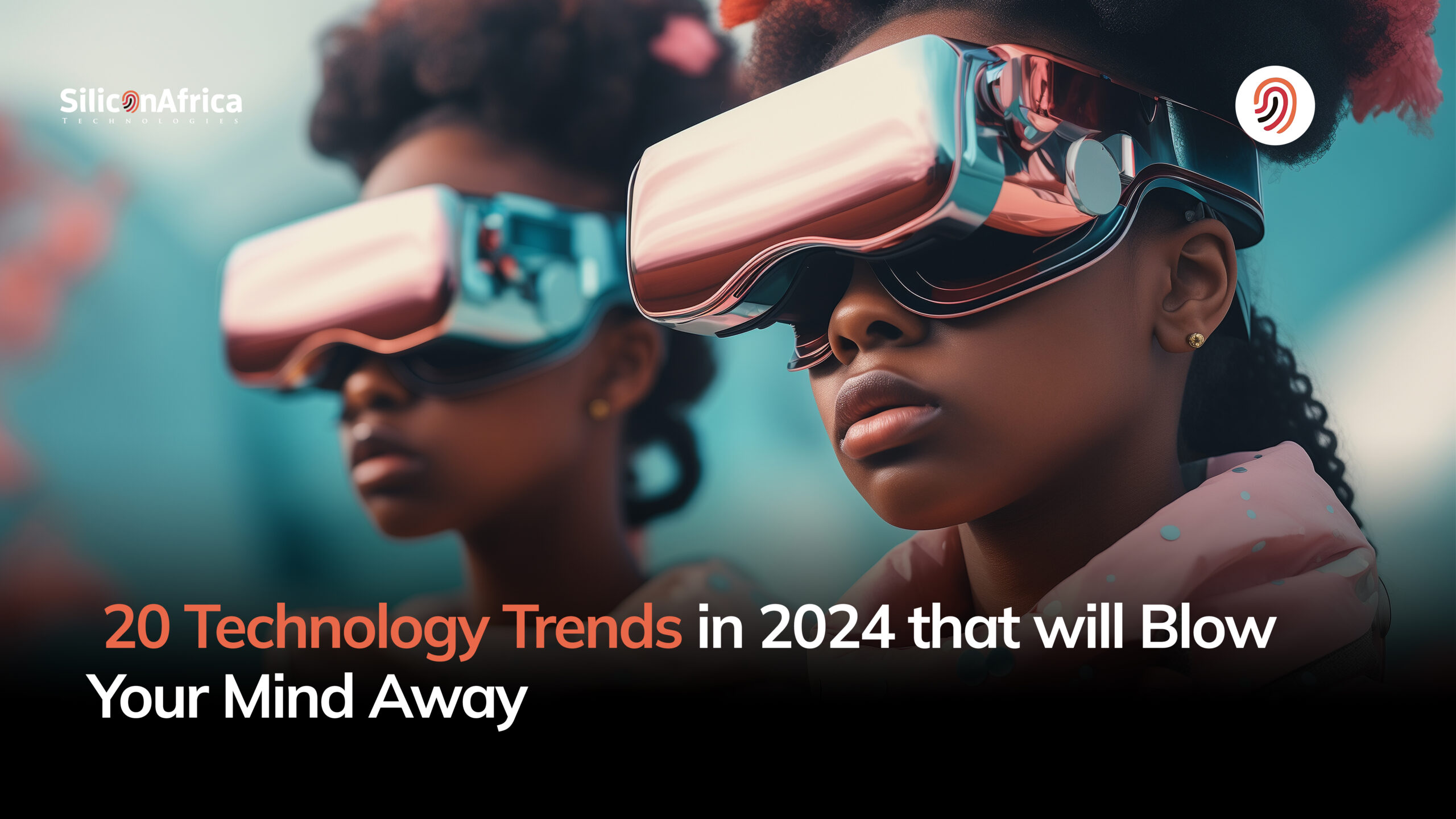
In this article, we will unravel the intricacies of the most anticipated technology trends in 2024. From artificial intelligence to quantum technologies, these trends are not just buzzwords; they are the building blocks of a future that is being shaped before our eyes. As technology seamlessly intertwines with our daily lives, creating new possibilities and redefining the very fabric of our existence, it is crucial for professionals in the field to stay ahead of the curve.
As we step into the promising days of 2024, the world of technology unfolds with anticipation, promising a year of groundbreaking advancements that will shape our digital landscape like never before. The pace at which new technologies are emerging not only reflects a rapidly evolving industry but also a transformative shift in the way we perceive and interact with the world around us.
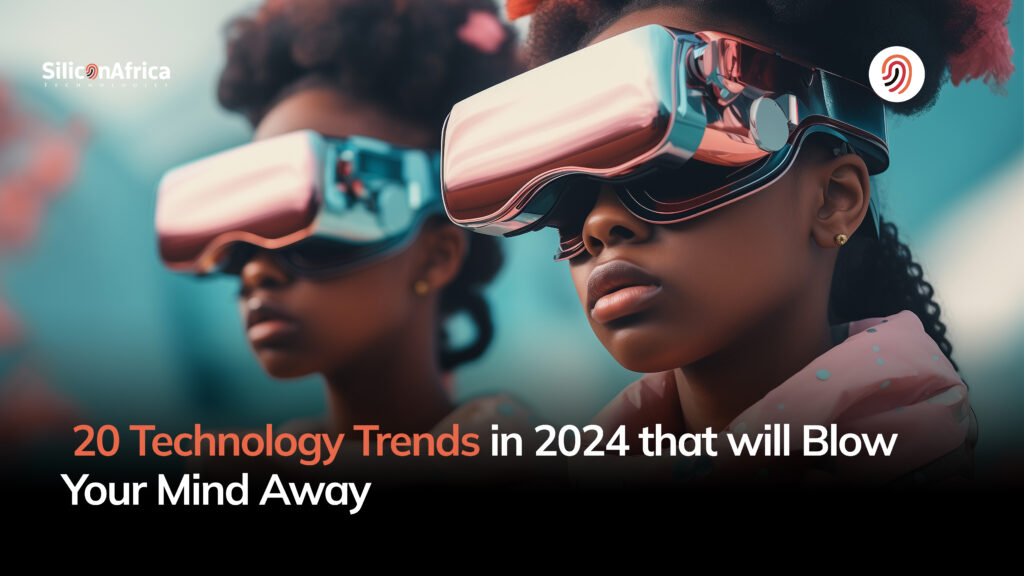
Therefore, in this era of continuous innovation, staying ahead of the curve is not just an option; it’s a necessity for professionals in the field. The ever-changing dynamics demand a constant pursuit of knowledge, with IT professionals at the forefront of mastering new skills and adapting to novel paradigms. The year 2024 heralds a future where technology intertwines seamlessly with our daily lives, creating new possibilities and redefining the very fabric of our existence.
Our journey into the technological landscape of 2024 begins with a captivating exploration of the top 20 technology trends that are set to revolutionize the way we live, work, and connect. So, join us on this voyage into the heart of innovation, where each trend beckons a world of possibilities and promises to blow your mind away.
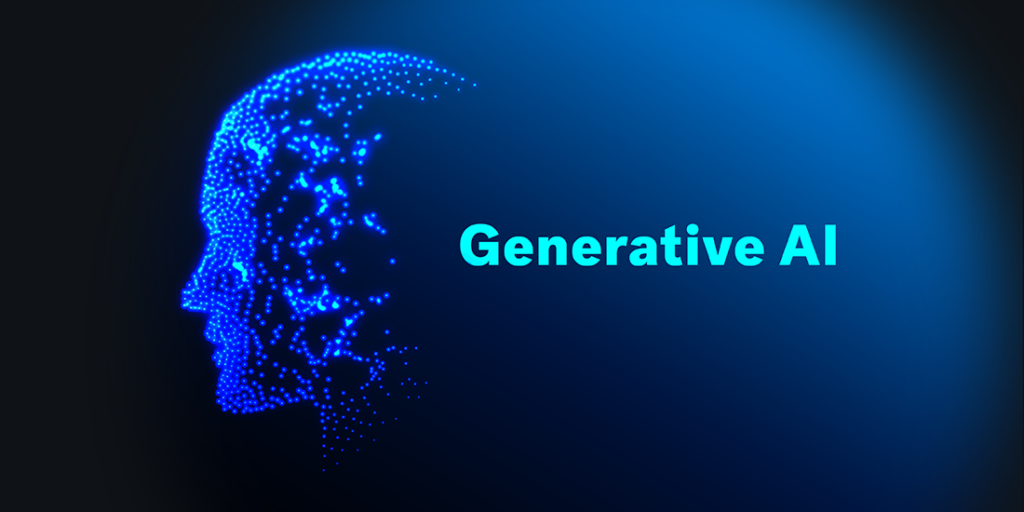
As we delve into the technology trends of 2024, the spotlight falls on Generative AI, a revolutionary force propelling various industries into uncharted territories. This cutting-edge technology empowers machines to create content that mirrors human-generated work, transcending traditional boundaries.
Generative AI is not confined to a singular application; rather, it spans a spectrum of creative endeavors, from text and image synthesis to music composition. This transformative capability opens doors to diverse career paths, such as AI Researcher, Data Scientist, Content Creator, and AI Ethics Consultant. The mastery of Generative AI positions individuals at the forefront of innovation, offering a gateway to influence how we interact and create content in the digital age.
Powered by foundation models, Generative AI excels in multitasking and out-of-the-box functionality, ranging from summarization to Q&A and classification. Minimal training is required, allowing for targeted adaptation with minimal example data. Its operation involves learning patterns and relationships in a dataset of human-created content and using this knowledge to generate new content.
The applications of Generative AI are boundless, enhancing customer interactions through advanced chat and search experiences, exploring unstructured data via conversational interfaces, and simplifying repetitive tasks like RFP responses and content localization. Google Cloud, a key player in the Generative AI landscape, offers solutions like Vertex AI, enabling seamless interaction with foundation models without the need for ML expertise. Vertex AI Search and Conversation facilitates the development of generative AI-powered search engines and chatbots, while Duet AI acts as an ever-present AI collaborator for users of all skill levels.
Beyond its technological prowess, Google’s commitment to responsible AI is evident. Its products incorporate safety and security thanks to AI principles that place a higher priority on enterprise control over data, intellectual property, and personal privacy. As we navigate the expansive realm of Generative AI, the possibilities are not just fascinating but indicative of a transformative wave that will characterize the technology trends of 2024. Join us on this journey as we unravel the remaining 19 technology trends set to captivate and redefine the digital landscape.

While Generative AI tops our list in the ever-evolving landscape of technology trends in 2024, the prominence of computing power takes center stage, acting as the linchpin that propels our digital era forward. From the humblest household devices to the most sophisticated appliances, computing power has entrenched itself in every facet of our lives, laying the foundation for a future that promises even greater strides.
Data science experts, the architects of our tech-infused reality, foresee an upward trajectory for the computing infrastructure we are currently building. The shift from 5G to the impending era of 6G is on the horizon, carrying with it the promise of more power in our hands and a proliferation of devices surrounding us. Beyond the technological marvel, the surge in computing power is not just a harbinger of progress but a catalyst for the creation of new tech jobs, ushering in an era that demands specialized qualifications from its workforce.
From data science to robotics and IT management, computing power emerges as the bedrock powering a significant percentage of employment in every country. The increasing demand for computing prowess gives rise to a rather flourishing ecosystem that includes technicians, IT teams, relationship managers, and the burgeoning customer care economy.
An indispensable branch within this domain is Robotic Process Automation (RPA), exemplifying the intersection of technology and efficiency. RPA presents a pathway for enthusiasts to delve into a realm that promises transformative outcomes. The journey into RPA opens doors to coveted roles such as Data Scientist, AI Engineer, Robotics Researcher, AI Architect, and Robotics Designer, positioning individuals at the forefront of a tech-driven job market.
Behind the scenes, the components shaping computing power include the central processing unit (CPU), storage devices, Random-access memory (RAM), and the graphics processing unit (GPU). These intricate elements collectively contribute to processing speed, a crucial factor expressing the capacity of a computer or system to execute complex computations and data processing tasks.
Also, the growth of computing power has propelled advancements in scientific research, data analysis, and artificial intelligence, revolutionizing the landscape of contemporary computing. As technology hurtles forward with breakthroughs in hardware and software development, the importance of computing power becomes even more pronounced, playing a pivotal role in shaping the future of technology and innovation.
Essential to this narrative is the efficiency with which computers can complete tasks, with computing power acting as the arbiter of speed and operational capacity. Companies across various industries, from financial services like JPMorgan Chase to hosting providers like Temok, recognize the pivotal role of computing power, sparking interest in quantum computing and its potential.
In essence, computing power is not just a technological benchmark; it is the driving force propelling us into an era where efficiency, precision, and innovation will redefine the very fabric of our digital existence. As we continue our exploration of technology trends in 2024, the trajectory set by computing power is a harbinger of a future where the limits of what’s possible are continually pushed, laying the groundwork for a tech-driven renaissance.
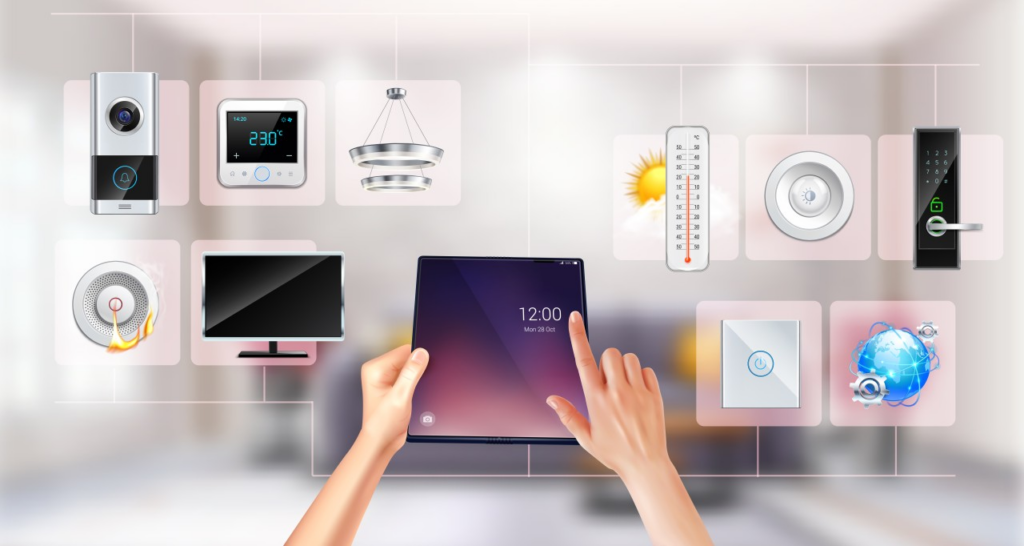
In the technologically charged landscape of 2024, the evolution of smarter devices becomes a focal point, transforming the way we live, work, and interact with the world around us. Artificial intelligence, the driving force behind this transformation, extends its reach beyond merely simulating human actions, aiming to make our lives not just smarter but remarkably hassle-free and simpler.
These intelligent devices are not fleeting trends; they are poised to become integral to our daily routines, with data scientists spearheading groundbreaking developments in AI home robots, appliances, work devices, wearables, and beyond. As we delve into the future, it becomes evident that almost every job in the digital era relies on smart software applications to enhance efficiency and manage the complexities of work life. The demand for proficiency in IT and automation is at an all-time high, making smarter devices a crucial addition to the IT industry’s requirements.
For those looking to carve a niche in this evolving landscape, there are key roles that promise both prominence and fulfillment:
The term “smart devices” encompasses a broad spectrum, ranging from smartphones and tablets to cutting-edge innovations like smart cars, thermostats, doorbells, locks, and refrigerators. These devices are not just standalone entities; they are interconnected, forming the intricate web known as the Internet of Things (IoT). Equipped with sensors, actuators, cameras, and more, smart devices exhibit three key characteristics: context-awareness, autonomous computing, and connectivity.
Context-awareness empowers smart devices to gather information about their environment, adapting their behavior accordingly. For instance, a smart thermostat adjusts the temperature based on room conditions, while a smart camera detects motion and faces, sending alerts to the user. The concept of autonomous computing enables smart devices to perform tasks without direct user commands. From suggesting actions based on user preferences to playing music, answering questions, or controlling other smart devices, autonomy is a defining feature. Finally, connectivity ensures that smart devices can communicate with each other and external services, utilizing data networks such as Wi-Fi, Bluetooth, and more.
The benefits of smart devices permeate various aspects of our lives:
As we peer into the future, the market for smart home automation is projected to reach remarkable heights, emphasizing the widespread adoption of smarter devices in homes across the globe. From keyless door locks and voice-controlled virtual assistants to USB wall outlets, smart thermostats, robotic vacuums, smart lights, video doorbells, and comprehensive home security systems, the array of smart technologies promises to enhance our lives in myriad ways.
In this tech-driven renaissance, even modest homes can partake in the smart house movement, with the benefits extending beyond convenience to the realms of safety, efficiency, and innovation. The integration of smart devices into our daily lives marks a pivotal shift, heralding a future where technology not only simplifies tasks but enriches our experiences. As we embark on this journey through the top technology trends in 2024, the pervasive influence of smarter devices is a testament to the ever-expanding frontiers of innovation shaping our digital tomorrow.
In the ever-accelerating technological landscape of 2024, one notable trend is contributing significantly to reshaping our daily lives—Datafication. This transformative process revolves around converting the various facets of human existence into digital data, encapsulating everything from personal information and consumer behavior to health records and educational performance.
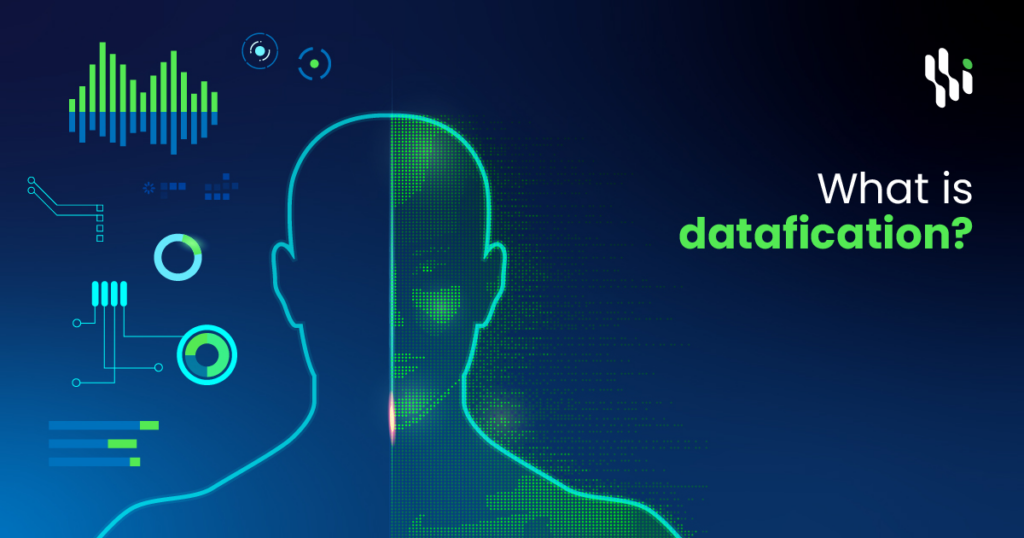
At its core, Datafication signifies the quantification and digitization of diverse aspects of human life and activities. In a world saturated with digital technologies, the sheer volume of data generated daily is staggering. Datafication extends beyond conventional data collection methods, permeating social media, mobile apps, and Internet of Things (IoT) devices. By converting routine activities into data, patterns, trends, and correlations previously concealed come to light.
The implications of Datafication are profound, offering organizations the ability to gain deeper insights into customer behavior, optimize operations, and create personalized experiences. However, this wave of digital transformation raises critical concerns regarding privacy, security, and ethical data use. Striking a balance between harnessing the power of data and safeguarding individual rights and freedoms becomes paramount.
1. Business Revolution:
2. Healthcare Transformation:
3. Retail Personalization:
4. Transportation Optimization:
5. Education Revolution:
The surge in Datafication translates into a burgeoning demand for IT professionals, data scientists, engineers, technicians, and managers. A robust understanding of technology combined with specialized data-related certifications opens doors to various lucrative careers:
Datafication is not just a technological trend; it’s a paradigm shift that permeates every industry, offering unprecedented opportunities for digital insights and innovations. As we navigate the data-driven landscape of 2024, individuals equipped with data-related skills find themselves at the forefront of this transformative wave, shaping the future of industries and redefining the way we perceive and interact with the world.
In the realm of groundbreaking technology trends in 2024, Artificial Intelligence (AI) and Machine Learning (ML) emerge as titans, reshaping the way we perceive and interact with our digital landscape.
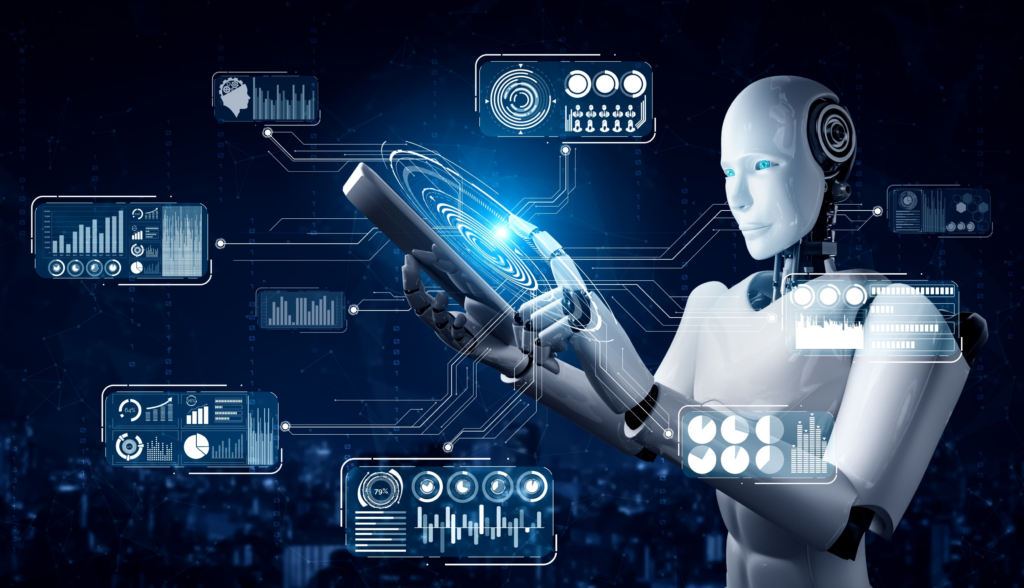
AI, having already sparked immense excitement in the past decade, remains a trailblazer in ever-evolving technology trends. Its impact on our daily lives, work, and entertainment is still in the nascent stages, promising transformative effects. Renowned for its prowess in image and speech recognition, navigation apps, personal assistants, and ride-sharing apps, AI is now set to delve deeper into our societal fabric.
Beyond the familiar applications, AI is gearing up to analyze interactions, unveiling underlying connections and insights. This extends to predicting service demand in sectors like healthcare, aiding authorities in optimizing resource utilization. Real-time analysis of changing customer behavior patterns is also on the horizon, promising revenue boosts and enriched personalized experiences. As AI spreads its wings, an array of new job opportunities arises, from development and programming to testing and maintenance.
Operating as a subset of AI, Machine Learning (ML) is experiencing widespread deployment across industries, leading to an escalating demand for skilled professionals. Projections by Forrester indicate that AI, ML, and automation will create 9 percent of new U.S. jobs by 2025, spanning roles like robot monitoring professionals, data scientists, automation specialists, and content curators.
Mastering AI and ML opens doors to a spectrum of lucrative careers, including AI Research Scientist, AI Engineer, Machine Learning Engineer, and AI Architect. As the demand intensifies, proficiency in these domains becomes a passport to securing some of the most coveted positions in the technological landscape.
While often used interchangeably, AI and ML represent distinct yet interconnected concepts within the technological spectrum.
The terminology surrounding AI can be intricate, with AI, ML, and deep learning often used interchangeably but signifying distinct concepts:
AI and ML are silently woven into the fabric of our daily lives, influencing sectors such as healthcare, business, supply chains, and more. In healthcare, AI aids in scanning medical images for early disease detection, while in business, it enhances operational efficiency through automation and insightful data analysis. Supply chains benefit from AI-driven systems that track shipments and forecast delays, ensuring seamless operations.
The benefits of AI and ML reverberate across businesses and consumers, promising personalized services for consumers and increased operational efficiency for businesses. As these technologies continue to evolve, the global AI market is projected to skyrocket from $136.6 billion in 2022 to a staggering $1.8 trillion in 2030, according to Grand View Research.
In this dynamic technological landscape of 2024, mastering AI and ML is not just a skill; it’s a strategic move to navigate the transformative wave and be a significant contributor to the technological advancements shaping our future. The era of intelligent living is upon us, and AI and ML stand as the architects of this unprecedented revolution.
In the fascinating realm of technology trends in 2024, Extended Reality (XR) emerges as a transformative force, encompassing a spectrum of immersive technologies from Virtual Reality (VR) and Augmented Reality (AR) to Mixed Reality (MR) and beyond.

Extended Reality is the umbrella term that encapsulates all immersive technologies, ushering us into realms beyond the ordinary. It comprises VR, where users are fully immersed in simulated digital environments; AR, which overlays virtual information on the real world; and MR, where digital and real-world objects coexist and interact in real-time. This amalgamation extends the boundaries of our perceived reality, creating experiences that captivate the imagination.
Augmented Reality (AR): AR enhances the real world with digital details such as images, text, and animation. It is experienced through AR glasses, screens, tablets, and smartphones, allowing users to interact with both the virtual and real worlds simultaneously. Notable examples include Pokémon GO, where digital creatures are overlaid onto the real world, and Snapchat filters that add virtual objects to your surroundings.
Virtual Reality (VR): In VR, users are fully immersed in a simulated digital environment, requiring a VR headset for a 360-degree view of an artificial world. Initially embraced by the gaming and entertainment industry, VR has found applications in healthcare, construction, engineering, the military, and various other sectors.
Mixed Reality (MR): MR represents the latest immersive technology, where digital and real-world objects coexist and interact in real-time. Microsoft’s HoloLens is a prime example, enabling users to place digital objects into their physical surroundings and interact with them. Industries are exploring the potential of MR to solve problems, support initiatives, and enhance overall business processes.
As XR gains prominence, career opportunities flourish across various domains:
In the evolving landscape of technology trends in 2024, Extended Reality stands as a beacon of innovation. XR is not merely a collection of technologies; it’s a transformative force that transcends the boundaries of our perceived reality, offering immersive experiences that captivate, entertain, and revolutionize various industries. As we step into this brave new world of XR, the possibilities are limitless, and the journey promises to be nothing short of extraordinary.
Still on the topic—technology trends in 2024. The concept of Digital Trust emerges as a critical foundation, reshaping how individuals and businesses interact with the digital realm. Digital Trust signifies the confidence and belief that people have in the ability of technology to create a secure, safe, and reliable digital world.

As individuals become increasingly intertwined with devices and technologies, the need for a trusted digital environment becomes paramount. Cybersecurity and ethical hacking stand out as major specializations contributing to the establishment and maintenance of Digital Trust. Job opportunities in these domains range from entry-level to senior roles, with ethical hacking requiring professional certifications and cybersecurity demanding qualifications such as diplomas or master’s degrees. Top jobs in these fields include:
Digital Trust addresses six crucial pillars, each playing a pivotal role in fostering confidence and reliability in digital interactions:
Building Digital Trust involves a strategic approach based on four pillars:
In the era of extensive digitization, Digital Trust emerges not just as a trend but as a fundamental principle shaping the future of secure and reliable technological interactions. As businesses and individuals embrace the digital realm, cultivating and maintaining Digital Trust becomes imperative for a seamless, trustworthy, and secure digital experience.
Among the list of technology trends in 2024, 3D printing, or additive manufacturing, stands out as a revolutionary force reshaping industries and innovation. This process of creating three-dimensional objects from digital files has evolved beyond mere prototyping, becoming a pivotal player in production technology.

3D printing’s significance is most pronounced in the biomedical and industrial sectors. Once a concept deemed futuristic, the ability to print real objects has become a reality, showcasing the enduring nature of 3D printing in technological advancements. The demand for this technology is growing exponentially, with Acumen Research and Consulting forecasting the global 3D printing market to reach a substantial $41 billion by 2026.
For individuals looking to explore career opportunities in the 3D printing domain, a sound knowledge of AI, Machine Learning, Modeling, and 3D printing is essential. Lucrative jobs in this specialization include:
3D printing is not confined to a single industry; rather, it spans a cluster of diverse sectors with myriad applications. Examples include:
As 3D printing continues to evolve, its transformative influence is set to extend across almost every major industry, making it a cornerstone technology in the landscape of emerging technology trends in 2024. The precision, efficiency, and versatility of 3D printing position it as a driving force in the future of innovation and production.
Still examining the concept of technology trends in 2024, Genomics emerges as a transformative force, offering a profound understanding of our genetic makeup and potential health implications. This technology delves into the intricate study of an organism’s complete set of genes, collectively known as its genome. The applications of genomics span from gene therapy and personalized medicine to drug discoveries, ushering in a new era in molecular biology.

Genomics involves a comprehensive analysis of genes, their interactions, and their influence on various biological processes. This intricate understanding enables the identification of potential health issues, paving the way for personalized health interventions. The genomic technologies dedicated to manipulating and analyzing genomic information have played a pivotal role in advancing our understanding of biology, evolution, and human health.
In the diverse landscape of Genomics, a multitude of both technical and non-technical roles awaits aspiring professionals. Technical roles center around designing, analyzing, and diagnostics, while non-technical roles involve higher levels of research and theoretical analysis. The top jobs in Genomics include:
The driving forces behind the rapid growth of the genomics market include the escalating demand for gene therapy, personalized medicine, and drug discoveries. Additionally, there is a significant surge in the demand for consumer genomics, reflecting a growing awareness of the potential applications of genomics in individualized health management.
The global genomics market is on an upward trajectory, with revenue forecasts projected to reach an impressive $94.86 billion by 2030. This substantial market growth underscores the increasing importance and investment in genomics technology, indicating its pivotal role in shaping the future of healthcare.
Genomics plays a significant role in technological innovations, unraveling the mysteries embedded in our genetic code. As the field continues to advance, it not only holds the promise of personalized health interventions but also contributes significantly to drug discoveries and our broader understanding of biological processes. The job opportunities in Genomics cater to a spectrum of skills, making it an enticing field for professionals seeking to make a meaningful impact on the future of healthcare.
New Energy Solutions stands out as a beacon of hope for a sustainable and eco-friendly future on our list of technology trends in 2024. The world is shifting towards greener alternatives, embracing technologies that harness renewable sources to meet our energy needs. This revolutionary trend not only addresses environmental concerns but also presents a host of career opportunities in science and social science specializations.

The global commitment to environmental sustainability has spurred the adoption of energy solutions that minimize carbon footprints. The shift towards electric vehicles, solar power, and renewable energy for homes signifies a collective effort to create a greener world. This trend has given rise to new energy solutions, creating a demand for professionals in various fields.
As the energy landscape undergoes transformation, exciting career opportunities emerge in the field of New Energy. Specializations in solar, thermal, hydropower, and more are in high demand. The top jobs in New Energy include:
According to a report gotten from here, India has exemplified a remarkable transition to low-carbon energy, increasing its non-fossil fuel capacity by approximately 400% in less than a decade. Currently, the country secures 40% of its electric capacity from renewable and non-fossil fuels. The need to combat global warming and reduce carbon emissions is what is driving this paradigm shift toward new energy solutions.
New energy encompasses the energy obtained from renewable sources that naturally regenerate over time. It is considered an indispensable source, especially in the context of rising global warming and pollution levels. The importance of new energy solutions lies in their potential to revolutionize the way we generate, store, and consume energy.
New Energy Solutions are not merely a technological trend; they represent a commitment to a sustainable and eco-conscious future. As the world grapples with environmental challenges, embracing these innovative solutions becomes imperative. From creating green job opportunities to reducing reliance on traditional fossil fuels, the impact of new energy solutions resonates across industries and sectors, paving the way for a brighter and cleaner tomorrow.
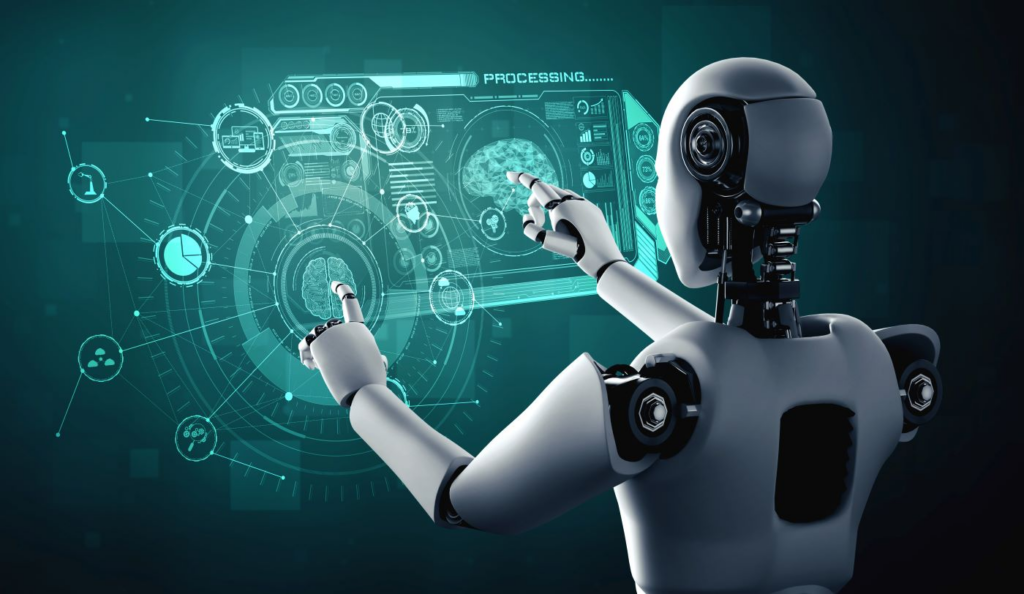
In the list of technology trends in 2024, Robotic Process Automation (RPA) emerges as a transformative force in business processes. RPA employs software to automate a spectrum of tasks, from application interpretation to email responses, revolutionizing the world of work. While it poses a certain threat to specific job roles, McKinsey suggests that only around 5 percent of occupations can be fully automated, leaving room for significant career opportunities.
For IT professionals navigating the evolving tech landscape, mastering RPA opens doors to lucrative positions such as RPA Developer, Analyst, Architect, and Consultant. The demand for these roles underscores RPA’s pivotal role in shaping the future of automated workflows.

While cloud computing has become ubiquitous, Edge Computing emerges as a technology trend to watch closely in 2024. As organizations grapple with increasing data volumes, Edge Computing addresses the limitations of cloud computing by processing data closer to its source, minimizing latency. This technology proves invaluable for scenarios requiring time-sensitive data processing in remote or bandwidth-limited locations.
Staying abreast of cloud computing and its offshoots, including Edge Computing, presents opportunities for roles like Cloud Reliability Engineer, Infrastructure Engineer, and Cloud Architect. These positions play a vital role in optimizing data processing efficiency and ensuring seamless operations.

Quantum Computing takes center stage as a remarkable technology trend, leveraging quantum phenomena for unparalleled computing capabilities. Beyond its potential impact on healthcare and finance, quantum computing plays a crucial role in tackling global challenges like the COVID-19 pandemic. With quantum computers outpacing traditional ones in speed, major industry players are investing in this field, projecting global market revenues to exceed $2.5 billion by 2029.
To make a mark in quantum computing, aspiring professionals need expertise in quantum mechanics, linear algebra, probability, information theory, and machine learning. As this technology evolves, it promises groundbreaking solutions to complex problems.

The convergence of Virtual Reality (VR), Augmented Reality (AR), and Extended Reality (ER) heralds a new era of immersive technology experiences. Initially associated with gaming, these technologies are expanding into diverse domains, including training, education, marketing, and rehabilitation. In 2024, we anticipate deeper integration into everyday life, offering enhanced user experiences and innovative applications.
Professionals venturing into VR and AR do not necessarily need specialized optics skills. Basic programming proficiency and a forward-thinking mindset can open doors to roles in training, entertainment, and beyond, making this technology trend accessible and exciting.

Beyond its association with cryptocurrencies, Blockchain emerges as a revolutionary technology offering secure data management. It operates on a consensus-driven model, ensuring data integrity and eliminating the need for a trusted third party. As industries increasingly adopt blockchain, the demand for skilled professionals surges across various sectors.
For those considering a career in blockchain, hands-on experience in programming languages, databases, web app development, and networking is crucial. Blockchain opens doors to roles like Risk Analyst, Tech Architect, Crypto Community Manager, and Front End Engineer, promising diverse opportunities in a secure and transparent data landscape.

The Internet of Things (IoT) remains a promising technology trend, connecting devices, home appliances, and vehicles to the internet. As the number of IoT devices soars, businesses leverage data collection and analysis to enhance safety, efficiency, and decision-making. Forecasts predict that by 2030, around 50 billion IoT devices will be in use globally, creating a vast interconnected network.
Professionals delving into IoT require knowledge of information security, AI, machine learning, networking, and embedded systems. Mastery of these elements positions individuals for impactful roles in shaping the future of connected devices.
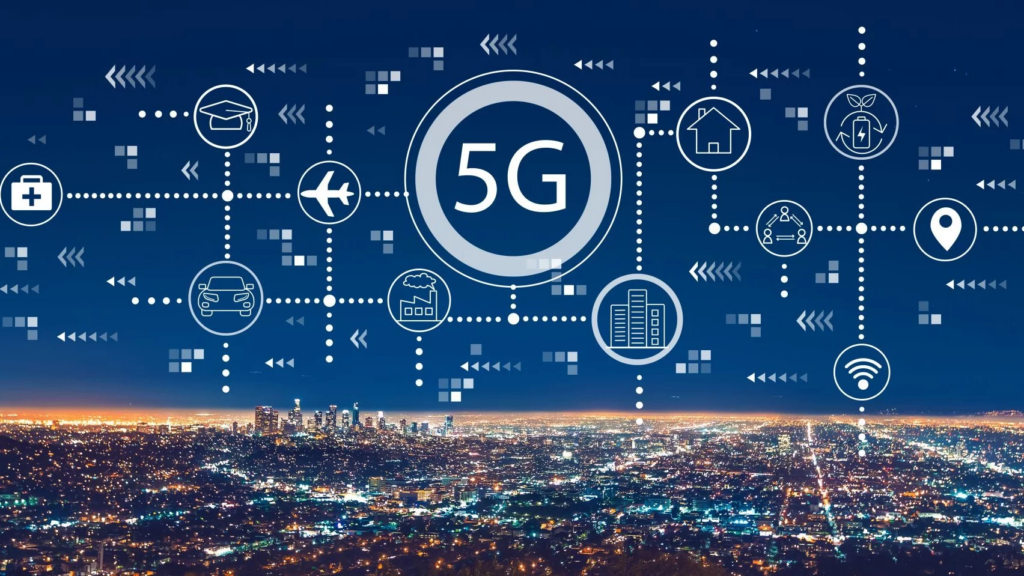
Following in the footsteps of IoT is 5G, the next technology trend poised to revolutionize connectivity. As an evolution from 3G and 4G, 5G is expected to unlock advanced services reliant on technologies like AR, VR, and cloud-based gaming. Telecom giants, including Verizon, T-Mobile, Apple, and Nokia, are actively developing applications to harness the power of 5G.
The widespread adoption of 5G, projected to reach 4.4 billion subscriptions by 2027, signals an emerging technology trend with far-reaching implications. Professionals engaging with 5G technologies will contribute to innovations that redefine the digital landscape.

Cybersecurity, although not a new technology, continually evolves to counteract emerging threats. As organizations prioritize cybersecurity risk in business engagements, the field undergoes constant refinement to safeguard against evolving threats. Gartner predicts that, by 2025, 60% of organizations will consider cybersecurity risk a primary determinant in their transactions.
In this dynamic landscape, lucrative roles such as Ethical Hacker, Malware Analyst, Security Engineer, and Chief Security Officer emerge. The evolving nature of cybersecurity ensures a promising career path for professionals committed to staying ahead of cyber threats.
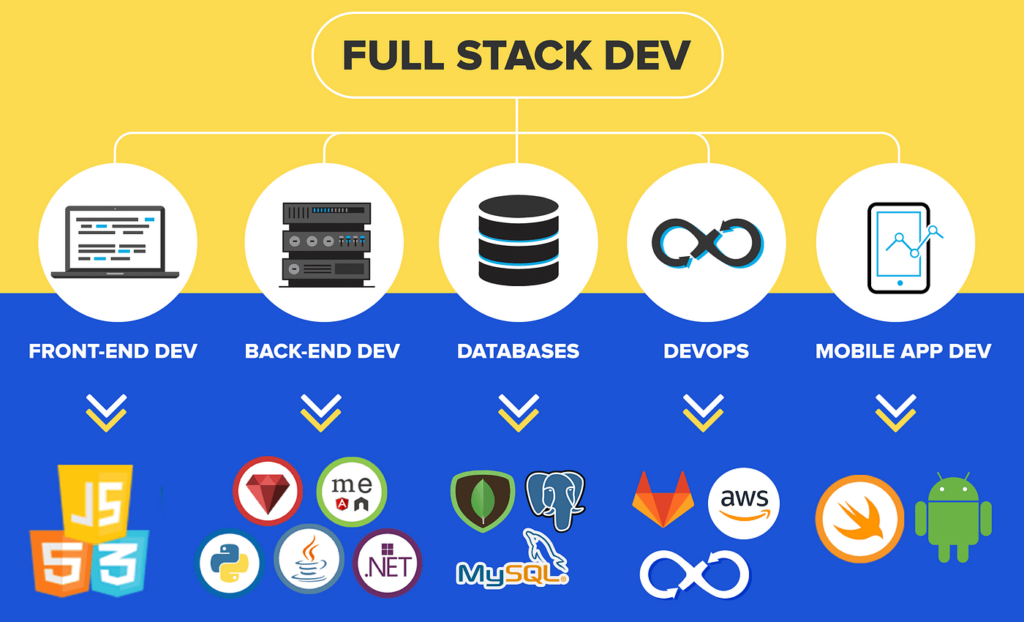
Full Stack Development gains momentum as a technology trend, encompassing both front-end and back-end components of software applications. This approach, which streamlines the development process, appeals to businesses seeking versatile developers capable of building end-to-end solutions efficiently.
Mastery of multiple programming languages, OOPS fundamentals, databases, data structures, web app development, and networking positions individuals for success in Full Stack Development. The trend empowers developers to contribute to faster product development and deployment.
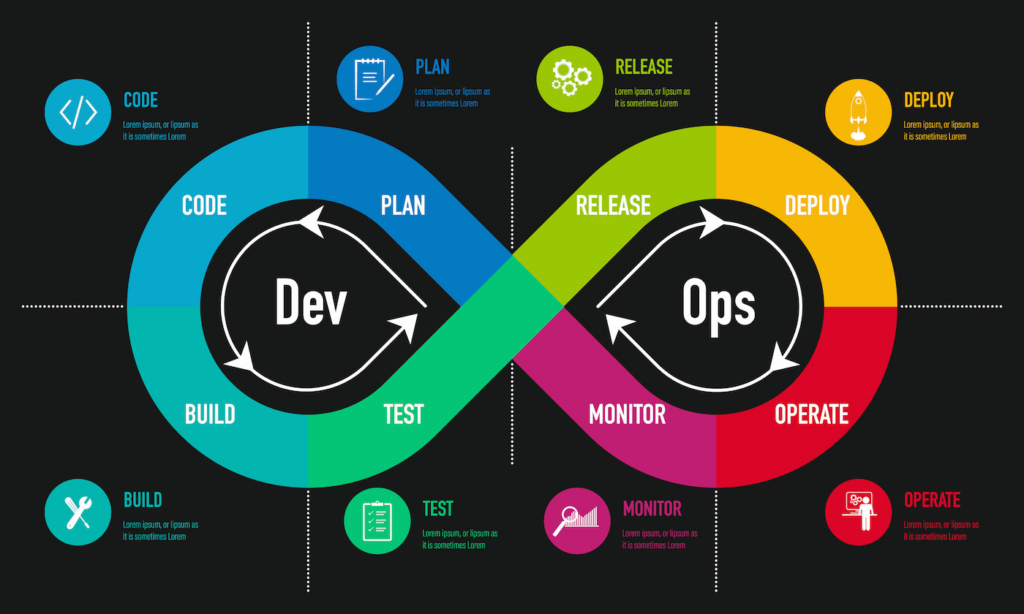
DevOps, a set of practices emphasizing collaboration between software development and IT operations teams, stands as a pivotal technology trend. Focused on automating and streamlining the software development lifecycle, DevOps practices include continuous integration, continuous delivery, infrastructure as code, and automated testing.
Adopting DevOps principles leads to faster development cycles, improved software quality, and greater agility in responding to changes. Professionals well-versed in DevOps contribute to enhanced collaboration, making them invaluable assets in today’s fast-paced software development landscape.
In conclusion, the overarching theme resonating through these technology trends is the relentless pursuit of innovation. Tomorrow’s tech landscape will be characterized by seamless connectivity, intelligent automation, and sustainable energy solutions. As we embark on this journey into the future, staying attuned to these top new technologies in 2024 is not just a choice but a strategic imperative for those seeking to thrive in the digital age.
Embrace the wave of change, become a master of these technology trends, and be at the forefront of shaping a technologically advanced and sustainable future.
Are you a tech enthusiast interested in staying abreast of the latest tech information? Look no further, as SIlicon Africa is where you can get the latest and undiluted tech updates. Hopefully, you enjoyed the ride with us during the exposition about the latest technology trends in 2024.